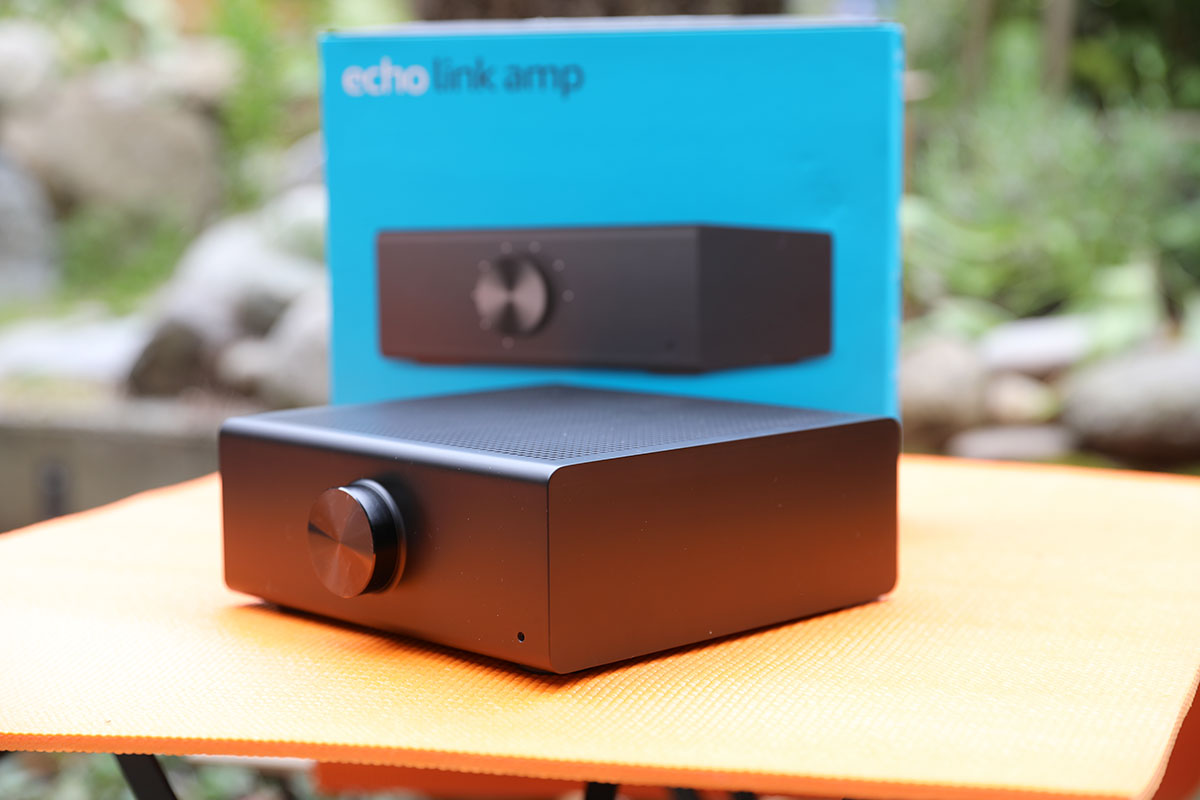
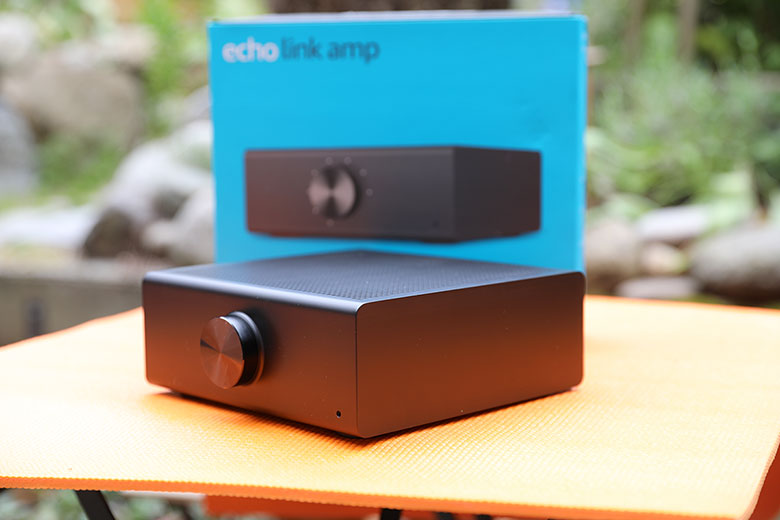
The Master Switch


The Master Switch
Weight: 5lbs
RMS: 60W/8Ω
DAC: Yes
What We Like: Simple to set up, good level of power.
What We Don't: Pathetic sound quality, no Alexa voice control, awful design.
Jeff Bezos and Amazon want to take over the world - if you don’t believe that, then we have a bridge to sell you (and we’ll ship it to you on Amazon Prime). Hi-fi audio is part of that world, so it’s hardly surprising that Amazon have released a stereo amplifier of their own, the Echo Link Amp. In this review, we break down the Echo Link Amp’s sound, design, packaging and accessories, specs and more. To see how it stacks up, check out our list of the best stereo amps.
Here’s the thing about the Amazon Echo Link Amp. It is a textbook example of Amazon’s business model, which is both simple and highly effective. Since they run the biggest online store in the world, and can see exactly what people are buying, they can very easily determine which products are selling the fastest. From there, it’s a simple matter of making their own version, cutting out the middleman, and taking all the profits. If you’ve ever bought a set of AmazonBasics cables or batteries or storage bins, then you’ve been a part of this. It’s not necessarily a bad thing – it’s clever business, and we’ve never had any issue with Amazon’s in-house brand. But in the case of the Echo Link Amp, it falls flat on its face. Badly.
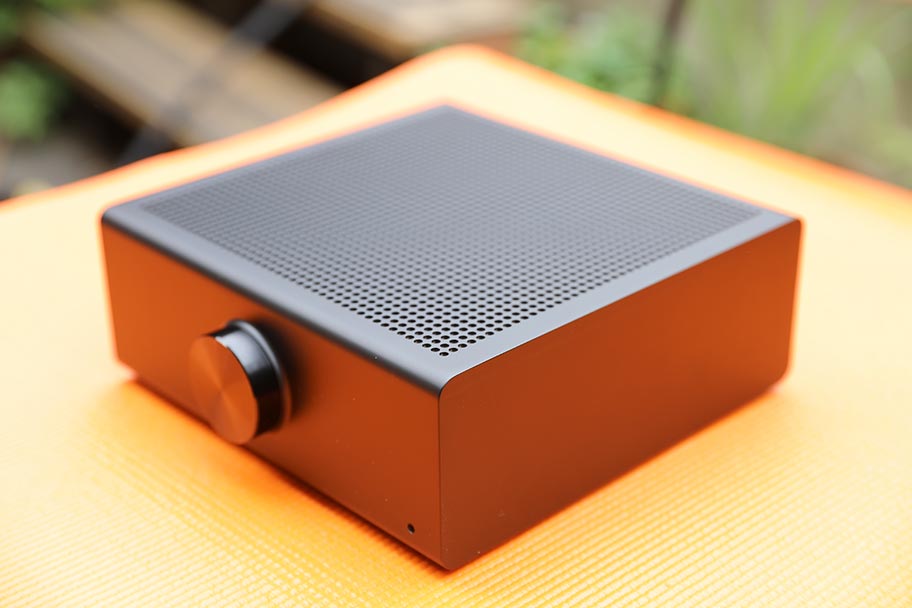
The problem is, when it comes to hi-fi, the standard is set incredibly high – even at budget prices. An amp is a not a USB cable. It’s not enough to just release a basic amplifier that can power speakers – to compete, and to succeed, you actually have to do something interesting. And the Echo Link Amp just...doesn’t. It’s one of the most boring amps we’ve ever encountered. And on this site, we’ve tested many stereo amps.
We’ll talk about the functionality – or lack thereof – in more detail below, but let’s stick with sound quality for now. It provides the best illustration of just how dull this amp is. The Echo Link Amp delivers audio quality that is flat, lifeless, and boring. This is most evident in the low-end. No matter what tracks we tried, or which speakers we plugged into the amp, the bass never raised an eyebrow. It meandered around in the background, muttering, never really sure where it was going or what its plan was - like a drunken accountant at a wedding, trying desperately to score. There is a subwoofer output, but that doesn’t change the fact that the Echo’s bass is sub-par.
It was astounding that a $300 amplifier could deliver bass this poor. For contrast, we recently tested an Onkyo A-9110 (full review here) which costs exactly the same as the Echo Link Amp. The Onkyo actually has less RMS power than the Echo Link Amp - 50 watts at 8 ohms, versus 60 for the Echo – and the performance was better by an order of magnitude. The Onkyo blew the Amazon amp away.
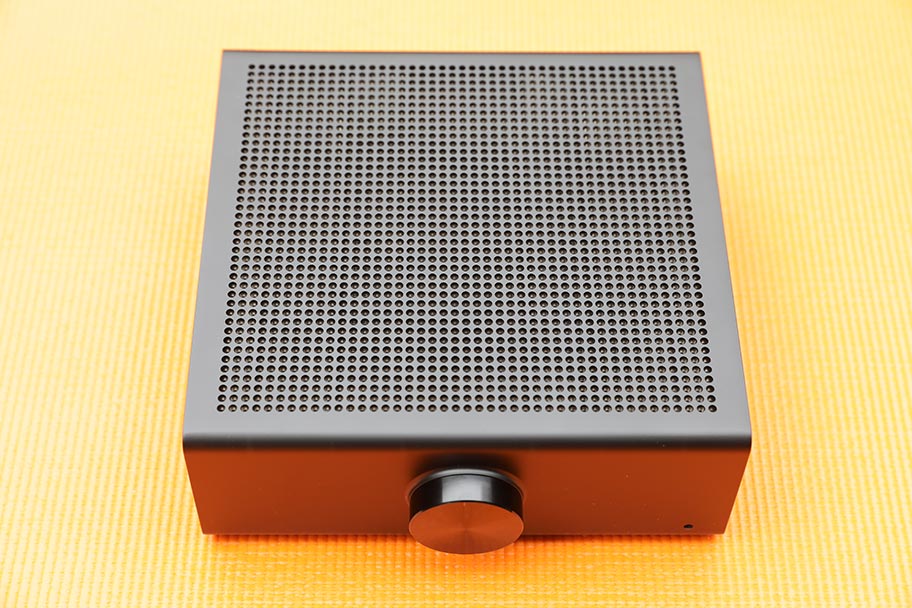
It’s never a good sign when you’re trying to analyze sound but keep thinking about scrambled eggs. Here are some words from the notes we took while listening to the Echo Link Amp: soft, squidgy, lumpy, yellow, bland, needs salt. On the other hand, this could also be a salutary lesson about not writing audio reviews before breakfast…
It’s not just the bass that’s at fault here. Other elements of the sound, like the high-end and the mid range, were less than thrilling. There was absolutely nothing in them to excite the senses, no attempt to give the music any life at all. Sure, you can hear the sound, but that’s about it. It feels a little wrong to compare the overall sound quality of the Echo Link Amp to something like the Sonos Amp (full review here), which is double the price of the Amazon amp at $599. But they are both Wi-Fi-enabled amps, and we had both of them in our testing room. We couldn’t believe the difference. Perhaps it’s something to do with the fact that the Echo Link Amp’s included DAC can only support audio at 24bit / 192kHz (96kHz over optical connection). That is, to put it mildly, not very good.
And if you aren’t convinced by that comparison, we’ll go further. How about something like the Dayton Audio DTA 2.1 BT2? It looks just as boring as the name suggests, but it costs under $100 – a third of the Echo Link Amp – and does a far better job. It has much more detail and clarity, enough to easily outdo the bumbling Amazon amp with ease.
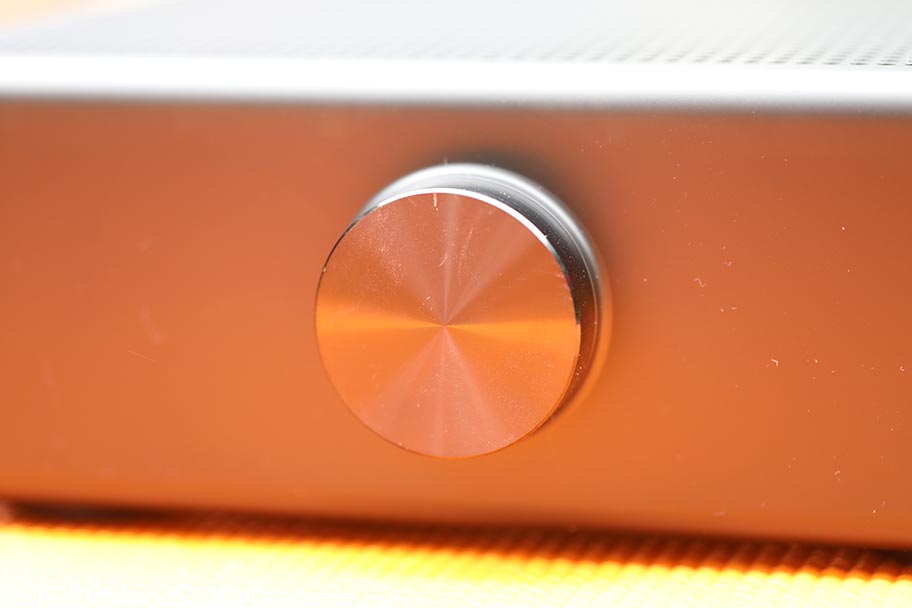
The soundstage is one area in which the Amazon Echo Link Amp doesn’t totally drop the ball, but it’s far from impressive. The imaging isn’t what you’d call wide, and certainly doesn’t immerse you in the music, but at the very least, it’s competent and delivers spacing that allows you to pick out the individual elements in a mix. This is helped along by decent speaker positioning, but for the most part, the Echo Link Amp acquits itself well. You may have lifeless sound, wobbly dynamics, and zero sense of rhythm and punch, but at least you’ll be able to tell the instruments apart in a song.
You can’t control the Echo Link Amp with your voice. Think about that. Here is the one thing that Amazon does really well – voice control – and the Echo Link Amp doesn’t actually include it. It may be a part of the same line as the Amazon Echo smart speaker, which revolutionised the industry, but you can’t actually use your voice to control it. If that isn’t a missed opportunity, we don’t know what is.
In fairness, there’s a little bit more to this. You can actually control the Echo Link Amp with your voice, via the Alexa app on your phone. You can also connect one of the aforementioned Echo smart speakers, and use it that way. But what’s the point? Why create this amp at all if you have to buy something else to get it to listen to you? Why take away the one thing that Amazon does really well? For exactly the same price as an Echo Link Amp and an Echo Dot, you can buy the Dot with the Onkyo A-9110, and get much the same functionality with markedly better sound.
The Echo Link Amp does come equipped with Bluetooth. Amazon have not revealed which version, and there’s no aptX functionality (here’s what that means). While the Echo Link Amp connects to Spotify and Amazon Music natively, and Apple Music via the Alexa app, those folk who listen to Tidal, Qobuz or Deezer are out of luck. There’s also no uPNP support.
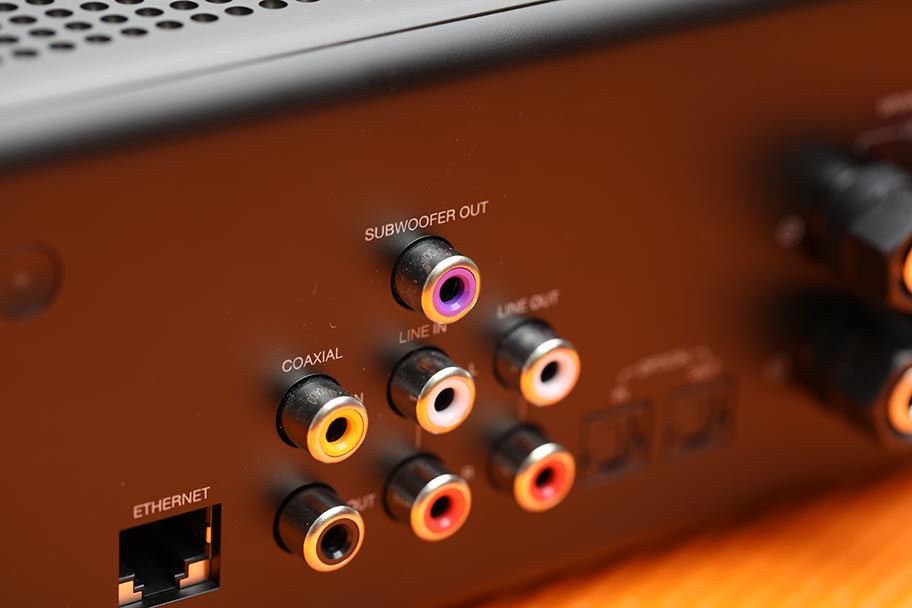
It’s entirely possible to use the Echo Link Amp within a home theater system. Amazon claim that the amplifier can handle any type of speakers, from basic bookshelves to floorstanding models. We hooked it up to a pair of Q Acoustics 3050i (full review here), then connected it to our TV via the optical connection. In all honesty, we shouldn’t have bothered. The audio quality of the movies and series we tried was weak and flabby, with none of the punch and excitement we wanted. The amp did the speakers dirty, and the 3050i are pretty damn good to begin with. They deserved better. So did we, and so do you.
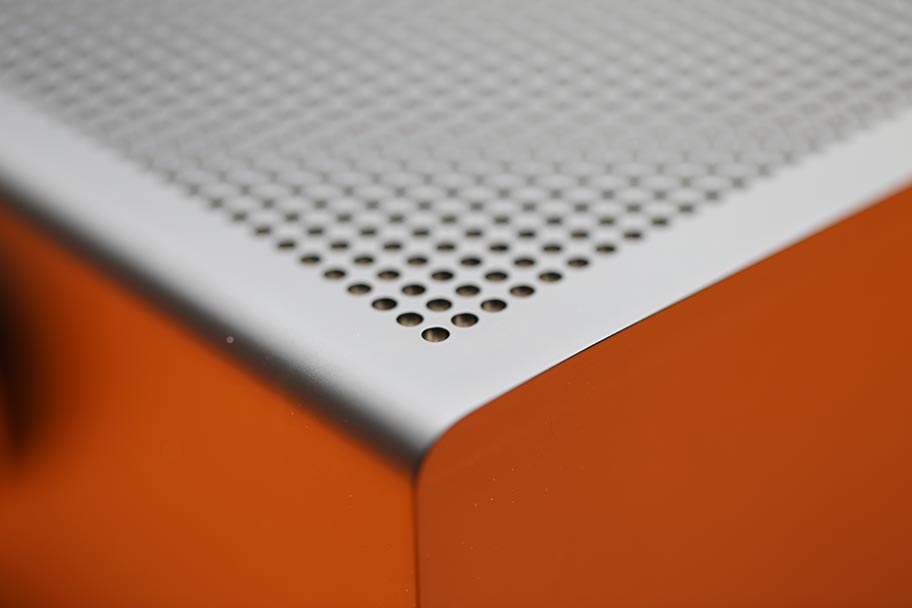
And since we are talking about missed opportunities, let’s talk about the design. Imagine how cool it would be if Amazon had taken the basic Echo Dot build and scaled it up? Imagine a giant-size Echo powering your speakers. If nothing else, it would look incredibly cool. Instead, what you have here is a big black box. It has as much design flair as a shoehorn. It’s as if Amazon’s engineers set out to build the most instantly-recognisable machine they could. As if they wanted people to look at it and immediately say, “yes, that’s an amp.” Ten points for simplicity. Minus several million for imagination.
Admittedly, the design isn’t completely useless. We do like the large volume knob on the front, which has a good amount of travel and operates smoothly. We will also admit to being fans of the lights that appear around the knob to indicate volume, which look pretty cool. But overall? As robust as the amplifier is, it’s not going to win any design awards.
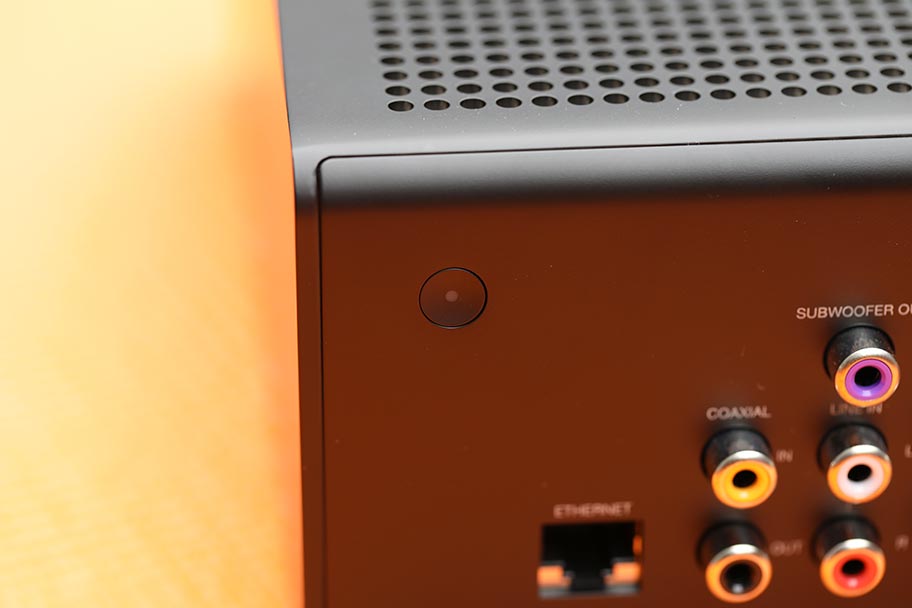
One thing to Amazon Echo Link Amp has going for it is easy setup. Connecting it to your Wi-Fi network is very straightforward. This is something that Amazon is actually very good at, and the Alexa app manages to get the job done without too much trouble. All you have to do is push a little button on the back of the amplifier to have it start looking for networks, and let the app handle the rest of the heavy lifting. Once that’s done, you can control the amp using the app. Compared to the more expensive Sonos Amp, the Echo Link Amp holds its own here.
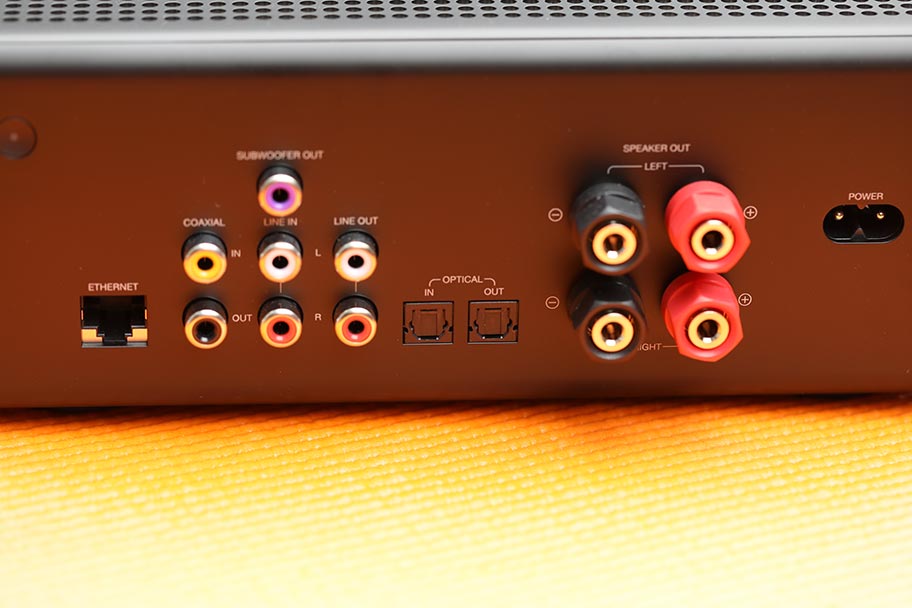
The Echo Link Amp has a decent selection of inputs and outputs available, almost all of which are located on the back of the amplifier. You get the usual speaker binding posts, which can be used with bare wire, or with banana plugs. There are also optical, coaxial, and line connections, meaning it’s possible to connect just about every conceivable piece of equipment to this amplifier, from TVs to CD players. And if the Wi-Fi fails, you can utilize the built-in Ethernet connection.
Interestingly, Amazon include a headphone output on the front of the unit. It’s a simple 3.5 mm connection, and while we don’t think it’s worth devoting a full analysis to, it functions perfectly well. If you’re interested in actually getting some decent headphone sound, check out our list of the best headphone amps.
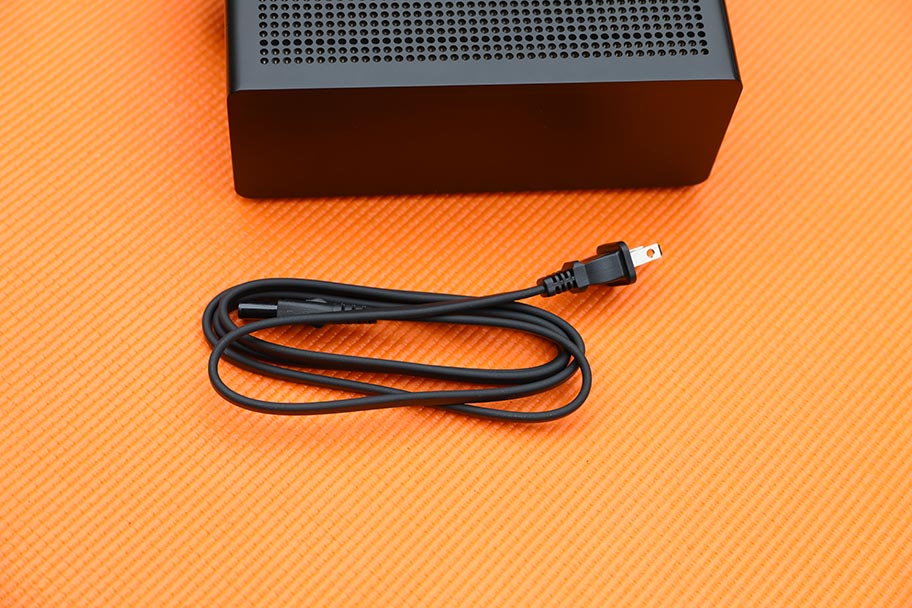
Oddly enough, we really missed having a remote here. We get why one wasn’t included, as the app is where you’ll do most of the control. But all the same, we badly wanted one, if only to see how Amazon would treat it. Still, that’s the life of an audio journalist – all sorts of dreams going unfulfilled. And it really is very little else to say about this particular aspect of the Echo Link Amp; the box is as basic as it gets, and the only other included accessory is a power cable.
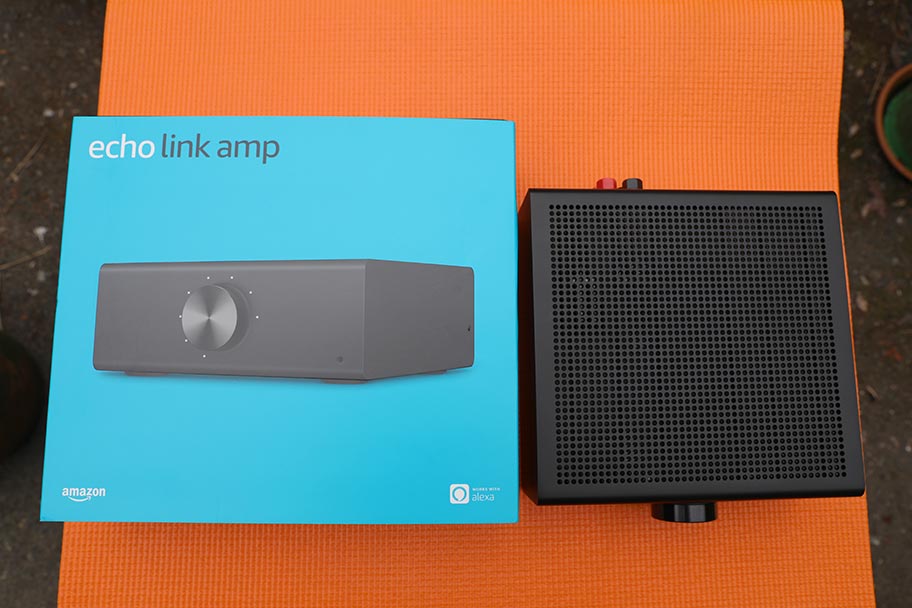
| Stereo Amp | Price | Weight | RMS* | DAC? | Peak** | Dimensions |
|---|---|---|---|---|---|---|
| Amazon Echo Link Amp | $399 | 5lbs | 60W/8Ω | Yes | Unknown | 9.5" x 8.5" x 3.4" |
| Sonos Amp | $649 | 4.6lbs | 125W/8Ω | Yes | Unknown | 8.2" x 7.3" x 2.5" |
| Onkyo A-9110 | $290 | 15.4lbs | 50W/4Ω | No | Unknown | 17.1" x 13" x 5" |
| Bluesound Node 2i | $549 | 2.45lbs | N/A | Yes | N/A | 8.7" x 5.7" x 1.8" |
| Amazon Echo Link | $199 | 1.1lbs | N/A | Yes | N/A | 5.3" x 4.5" x 2.7" |
*RMS = RMS/Continuous Power
**Peak = Peak/Dynamic Power
Want Even More Master Switch? Sign Up For Our Weekly Newsletter!
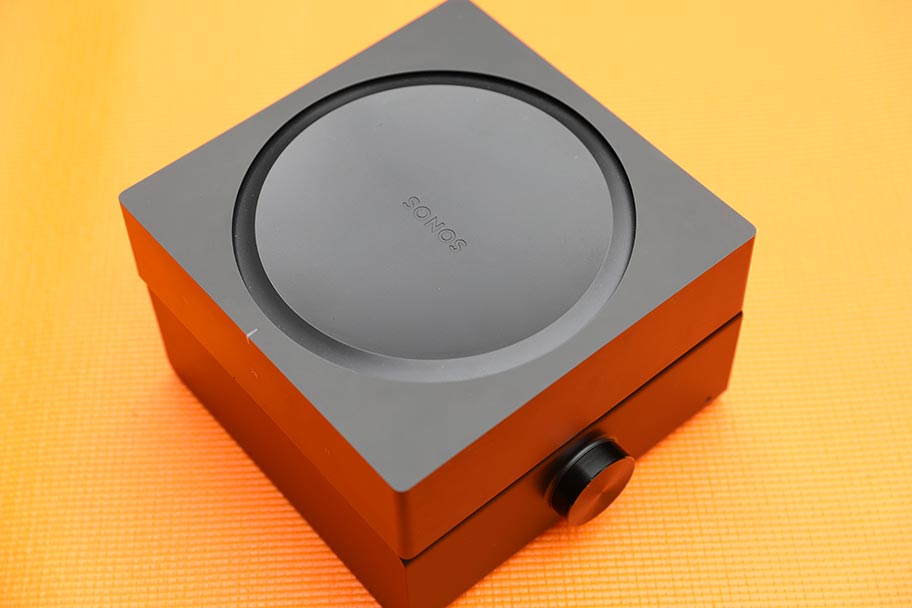
We are going to be brutally honest here. If you can afford it, you should buy the Sonos Amp. Yes, it may be over double the price of the Echo Link Amp, at $649, but it’s also stratospherically better in just about every way. The sound quality is excellent - far better than the Echo Link Amp - and the ease-of-use is just phenomenal, among the best we’ve ever tested. The Echo Link Amp is simple; the Sonos Amp is simple and fun. Then there’s the subtle design, slick touch controls, and the way it easily incorporates with other Sonos products. This is by far the superior option and one we highly recommend.
If you can’t afford the Sonos, then you may want to consider the Onkyo A-9110. It certainly won’t win any design prizes – like the Echo Link Amp, it’s a big black box – but it more than makes up for it with robust, thundering sound that has real weight behind it. You lose the Bluetooth functionality of the Echo Link Amp, but that’s about the only loss. Otherwise, this is a much better product - in terms of sound quality, and in terms of features. If you did want Wi-Fi functionality and voice control, you can quite happily connect an Amazon Echo Dot to the back of it. The A-9110 costs exactly the same as the Echo Link Amp, at $300.
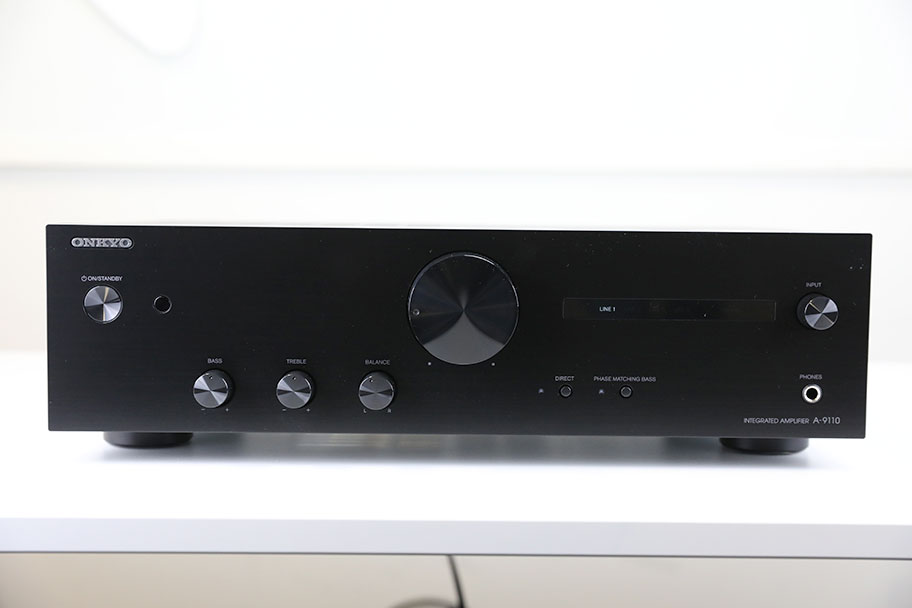
If you want something with more class and functionality, consider the Bluesound Node 2i. Admittedly, it doesn’t come with an included amplifier, which you will need to supply yourself. But it does deliver scintillating sound quality and absolutely superb functionality, through Bluesound’s BluOS interface. This is a step up from the Sonos Amp, and will suit those who like to pay careful attention to each component in the system. If you want a much more classy alternative – and one that will make you a lot happier than the Echo Link Amp – this is the one to go for.
Right now, the Echo Link Amp is the only amplifier that Amazon make – thank God. But they also make the Amazon Echo Link, a $200 device which does away with the amplification side of things and simply focuses on streaming music. It slides into the background as a single component in a larger system, rather than a dedicated centerpiece, which works in its favor. You don’t have to worry about terrible sound quality, although you will have to put up with slightly dull design.